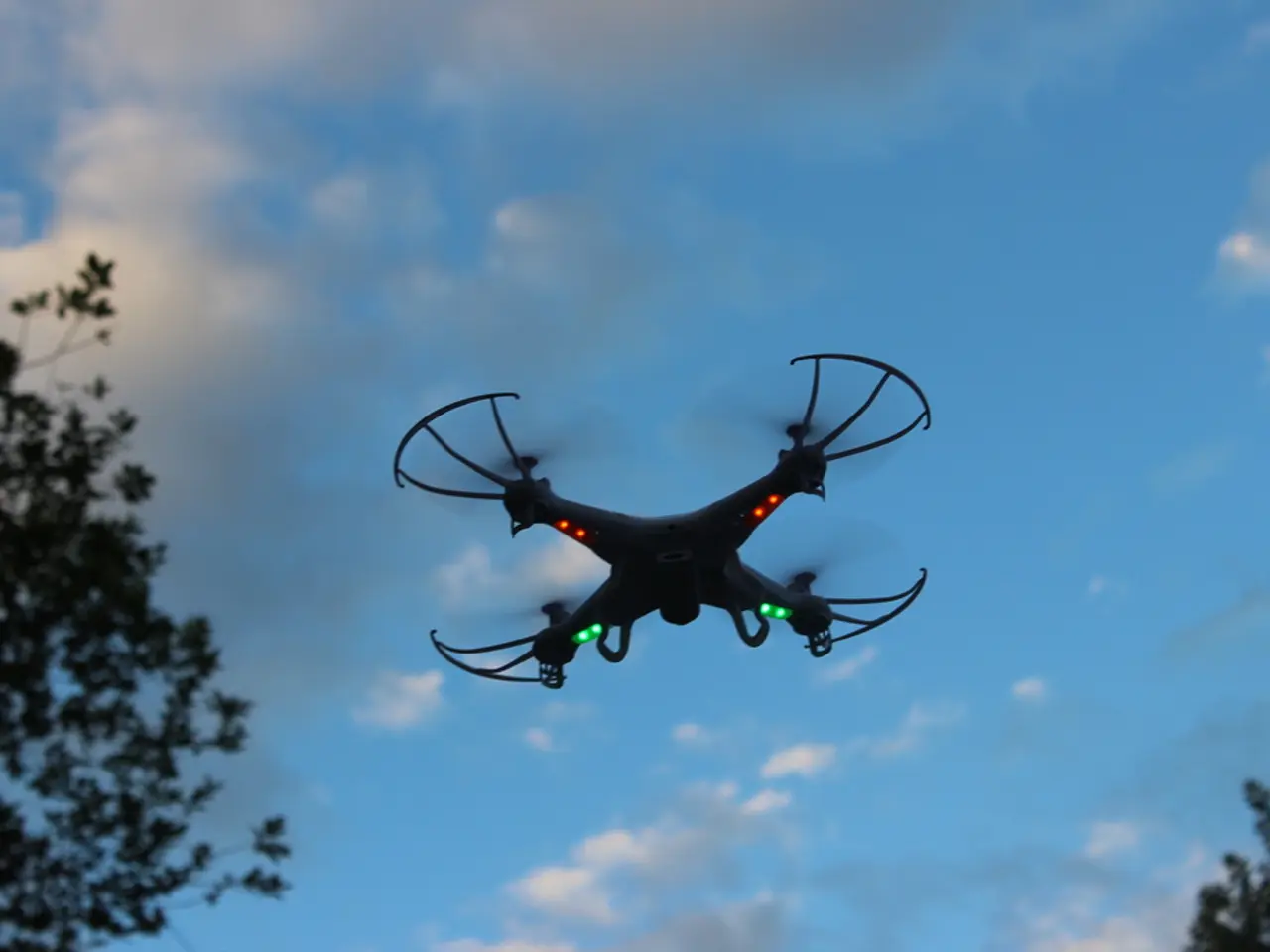Telemetry (TLM) Explained: A Look at Its Functioning
In the realm of drone technology, telemetry (TLM) has emerged as a crucial element, particularly for beyond visual line of sight (BVLOS) missions. This real-time transmission of data from a drone to a ground control system plays a significant role in ensuring the safety, efficiency, and compliance of such operations.
Telemetry systems enable drones to transmit real-time data about their location, altitude, speed, and other critical parameters. This data is essential for maintaining situational awareness and ensuring the drone remains within designated operational boundaries.
The safety and collision avoidance capabilities of telemetry are another key advantage. Combined with onboard systems like detect-and-avoid sensors, telemetry data helps drones navigate safely through airspace without visual line of sight. This is vital for avoiding collisions with other aircraft or obstacles.
Telemetry also empowers remote pilots and ground control stations to monitor and manage drone missions more effectively. This includes adjusting flight paths, responding to emergencies, and ensuring compliance with regulations.
Efficient telemetry systems support the optimization of drone operations by allowing for real-time monitoring and adjustments. This enhances the overall efficiency of BVLOS missions, whether they involve surveillance, delivery, or other tasks.
The ability to track and report drone activities through telemetry also helps operators comply with aviation regulations. This is particularly important for BVLOS operations, which often require waivers and strict adherence to safety protocols.
Notably, telemetry is an essential component of fail-safe operations. Return-to-home triggers and geofencing depend on telemetry to keep drones within safe operating limits. Advanced telemetry systems even support bidirectional communication, letting users send commands mid-flight.
Jacob Stoner, the CEO of Flyeye.io and a licensed commercial drone operator in Canada, is a highly respected figure within his local drone community. He frequently conducts drone inspections and indulges his passion for videography during his leisure time. Stoner is also deeply interested in the potential societal impact of drone technology advancements.
Most commercial and enterprise drones include some form of telemetry, but advanced features vary by model. Typical telemetry data includes GPS coordinates, altitude, pitch/yaw/roll, battery health, speed, and more. Some drones even store telemetry for post-flight analysis, helping identify performance issues or pilot errors.
In summary, telemetry is indispensable for BVLOS drone operations as it ensures safety, facilitates real-time mission management, and supports regulatory compliance. As drone technology continues to evolve, the importance of telemetry is set to grow, making it a cornerstone of safe and efficient drone operations.
Data-and-cloud-computing technology plays a crucial role in managing and analyzing telemetry data from drones, enhancing situational awareness, and improving operational efficiency. This technology allows remote pilots and ground control stations to store, process, and visualize real-time and historical telemetry data, thereby optimizing drone missions and ensuring compliance with regulations.
The integration of advanced data-and-cloud-computing solutions can further revolutionize the drone industry, enabling real-time analytics, predictive maintenance, and AI-powered decision-making, ultimately leading to safer, more efficient, and more compliant drone operations.




